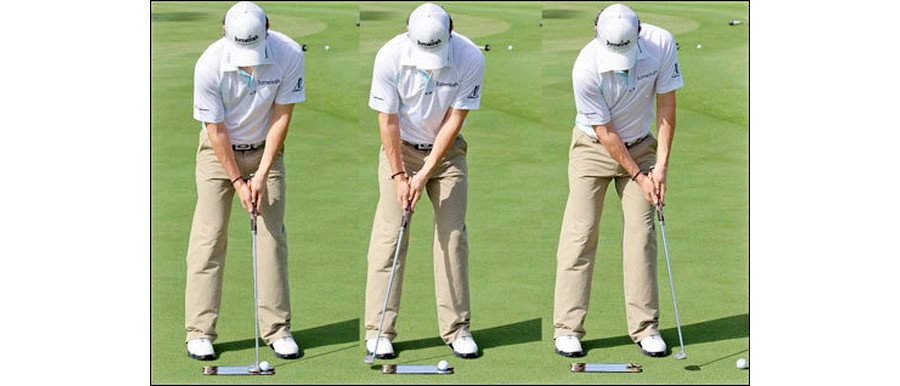Golfing News & Blog Articles
Don’t be a BRAIN DEAD PUTTER
Because you make about 36 putts on every round of golf, shouldn’t it be the easiest way to lower your scores. Lydia Ko won the Lotte Championship in Hawaii with drives that were 30 yards shorter than the longest drivers but averaged 4 putts less per round than the longest drivers. That is great inspiration and wake up call for recreational players. You need to apply a unique strategy for every putt specifically if its a lag, uphill, downhill and sidehill putt.
A great starting point is to practice making straight putts by swing straight up your putting line. Your ball position should be slightly forward of the center of your stance to ensure a top spin roll without any bounce. Putt by rocking your shoulders and locking your wrists to make a straight putt. The best putters use their brains. They determine the speed of greens by using the practice green before they play a round of golf. They get a feel for the speed of up-hill, down-hill and side-hill putts as they are tuning up their brains. They also use these strategies:
 Rory McIlroy won Wells Fargo last week with great approach shots and putting: He sets up his putts forward in his stance, putts by rocking his shoulders and stares at his ball location as he swings up his target line.
Rory McIlroy won Wells Fargo last week with great approach shots and putting: He sets up his putts forward in his stance, putts by rocking his shoulders and stares at his ball location as he swings up his target line.Chip or Lag Putt Close to the Hole
Your good approach shot to every green is the starting point for your first putt. Of course you want to minimize the length of your first putt but if you don’t have the skill to stop on a dime, plan for a safe landing area on or near the green (avoiding perimeter sand traps and extreme slopes). Improve your chipping skills and lag putting skills to get your ball within the 10 foot of the hole where you have a real chance to sink your putt.
Strategic Putting
You need a different strategy for uphill, downhill and side-hill putts. Walk around your putting line to determine the direction of the slope and the amount of slope. The best putters will make a firm putt to minimize the break as the ball reaches the hole (at its slowest speed where it will break the most). Remember that all putts that dies short of the hole never goes in so plan putting with enough speed to pass the hole.
Uphill Putts (Make a firm putt and expect less break.): When your putt is primarily uphill, looks for the side hill break and make sure to account for that break but your FIRM PUTT UPHILL will limit the side-hill break. Make sure that you are putting to pass the hole by up to 2 feet to MINIMIZE the side-hill break.
Sidehill Putts (Make your short putts firm.): When you putt across a minor slope on a 1 to 3 foot putt you should be putting firm enough to MINIMIZE the break and pass the hole by 2 feet (if you miss the hole). Plan to shape your longer sidehill putts to die into the hole. [You have seen golfers like Adam Scott hold up a finger or 2 fingers while planning for side hill putts where the number of fingers are a reminder for the magnitude of the slope. There is no perfect system or Adam would be on top of his game today.]
Downhill Putts (Die into the hole): These putts are the most difficult to sink as you can’t make firm putts to avoid imperfections on the green. Firm downhill putts may just end up in a longer return putt and possibly a third putt so you have no choice but to die into the hole. Choose your line and prey for success based on your experience to choose the right line for any side slope during your putt.
Practice all of our putts with GOLFSTR+ to keep you leading wrist locked. See you success and then apply the same shoulder rocking swing for all of your putts. Buy one today at www.GOLFSTR.com
Golf Truism #59: I’s easier to get up at 6 AM to play golf then at 10 AM to move the lawn.
The post Don’t be a BRAIN DEAD PUTTER appeared first on GOLFSTR.


